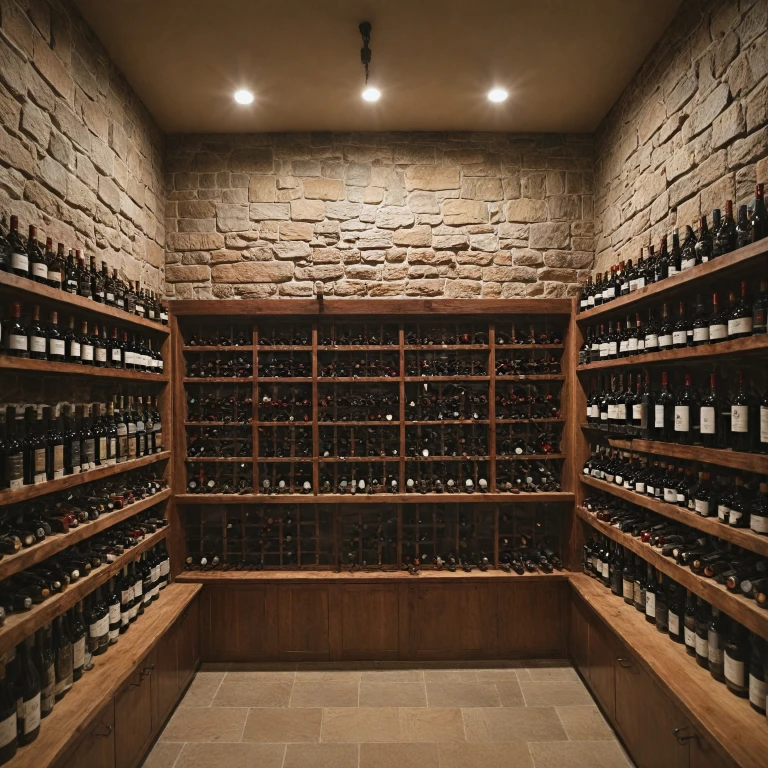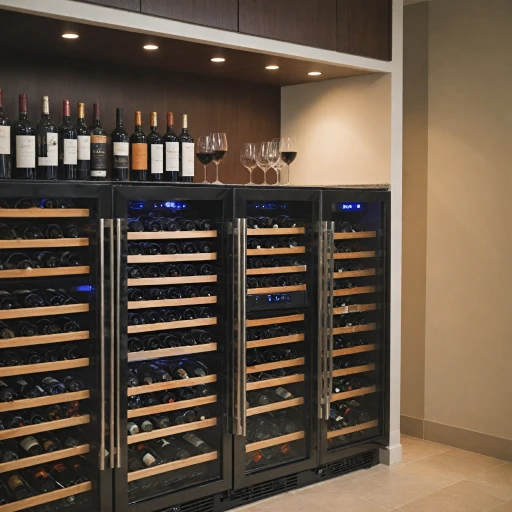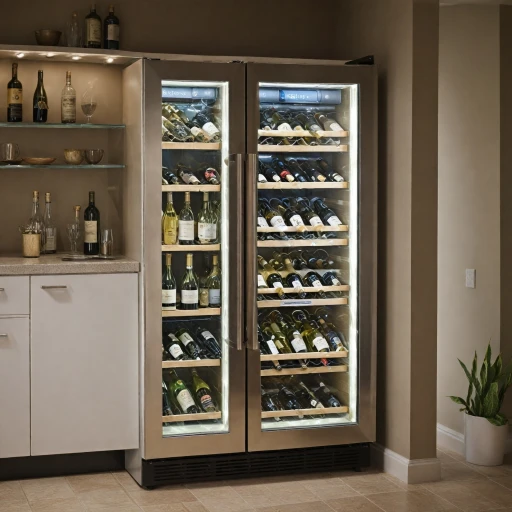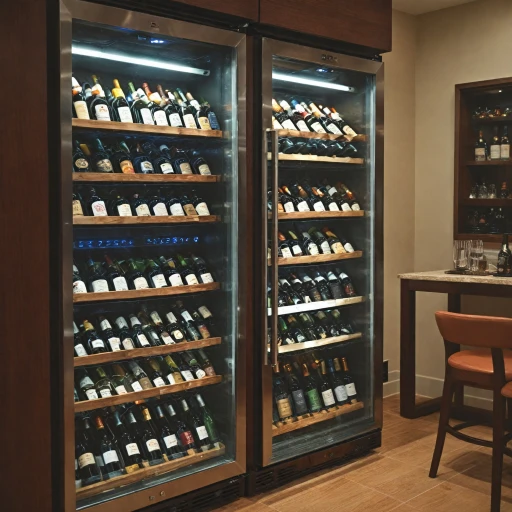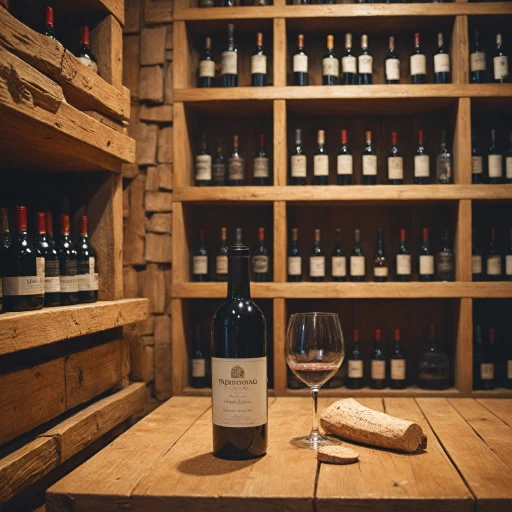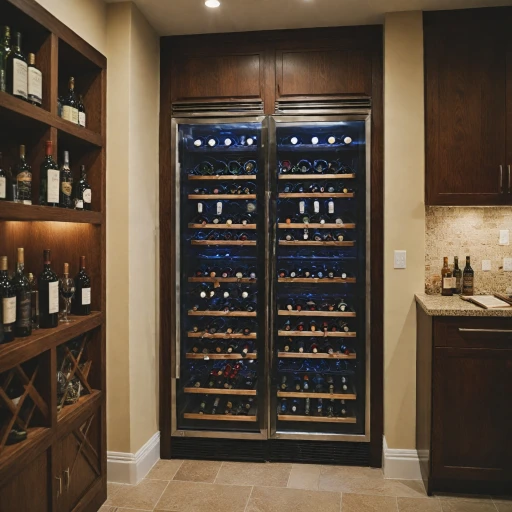
Understanding the Importance of Proper Wine Storage
The Significance of Proper Wine Storage
Proper wine storage is crucial for maintaining the quality and flavor of your wine collection. Whether you are a seasoned collector or a casual enthusiast, understanding the nuances of wine storage can significantly impact your experience. Wine is a delicate product, and its preservation depends on several factors, including temperature, humidity, and the type of storage solutions you choose.
Many wine enthusiasts overlook the importance of a suitable storage environment, which can lead to spoilage or loss of flavor. Wine bottles require a stable environment to age gracefully, and this is where wine racks, boxes, and cellars come into play. These storage solutions help in organizing your collection and ensuring that each bottle is stored under optimal conditions.
Temperature and humidity are two critical elements that play a vital role in wine storage. Maintaining a consistent temperature prevents the wine from expanding and contracting, which can compromise the cork and lead to oxidation. Similarly, appropriate humidity levels prevent the cork from drying out, which is essential for long-term storage.
When considering wine storage, it's also important to think about the space you have available and the types of storage solutions that best fit your needs. From simple cardboard wine boxes to sophisticated wooden wine racks, each option offers different benefits and price points. As you delve deeper into the art of storing wine, you'll discover that the choice of storage can be as diverse as the wines themselves.
In addition to these factors, organizing your wine collection effectively can enhance your wine-tasting experience. Avoid common mistakes by investing in the best wine storage solutions that suit your needs and budget. By doing so, you ensure that each bottle remains a star of your collection, ready to be enjoyed at its peak.
Exploring Different Types of Wine Storage Boxes
Exploring Various Wine Storage Options
Choosing the right storage solution for your wine collection is crucial to preserving the quality and taste of your bottles. There are several types of wine storage boxes and racks available, each catering to different needs and preferences.
Wooden Wine Boxes
Wooden wine boxes are a classic choice, offering both durability and aesthetic appeal. These boxes often come in a variety of finishes, from natural wood to painted options, allowing you to match them with your existing decor. They are excellent for long-term storage as they provide a stable environment for your wine bottles.
Cardboard Wine Boxes
For those seeking a more budget-friendly option, cardboard wine boxes can be a practical choice. These boxes are lightweight and easy to stack, making them ideal for those with limited space. However, they are best suited for short-term storage due to their susceptibility to moisture and damage.
Wine Racks and Crates
Wine racks and crates offer a versatile storage solution, allowing you to display your collection while keeping it organized. Racks can range from simple metal designs to intricate wooden structures, each with varying price points. Wine crates, on the other hand, provide a rustic charm and are often used in wine cellars for bulk storage.
Considerations for Choosing Wine Storage
When selecting the best wine storage option, consider the number of bottles you need to store, the available space, and your budget. Additionally, reviews and star ratings can provide valuable insights into the quality and functionality of different products. Remember, the right storage solution not only protects your wine but also enhances your enjoyment of it.
Factors to Consider When Choosing a Wine Storage Box
Key Considerations for Selecting the Ideal Wine Storage Solution
Choosing the right wine storage box is crucial for preserving the quality and taste of your wine collection. When selecting a storage solution, several factors come into play, each impacting the overall effectiveness of your wine storage strategy. Here’s a breakdown of what to consider:
- Material: Wine boxes come in various materials, including wood, cardboard, and even metal. Wooden wine boxes and racks are popular for their durability and classic appeal, while cardboard wine boxes are more economical and suitable for short-term storage.
- Size and Capacity: Consider how many bottles you need to store. Wine racks and boxes vary in size, from small racks for a few bottles to large wine crates that can hold dozens. Ensure you have enough space to accommodate your collection, whether you’re starting with a few bottles or have an extensive array.
- Price and Budget: Wine storage products range in price. While some high-end wooden wine racks offer elegance and sophistication, there are also affordable options that don’t compromise on functionality. Reviews and star ratings can be helpful to gauge the best wine storage options within your budget.
- Temperature and Humidity Control: Proper wine storage requires maintaining the right temperature and humidity levels. Consider investing in a humidity-controlled wine fridge for optimal conditions, especially for long-term storage. For more insights, check out this enhance your wine collection with a humidity-controlled wine fridge.
- Aesthetic and Space: The visual appeal of your wine storage solution matters, especially if it’s a focal point in your home. Black or wooden wine racks can complement various interior designs. Additionally, ensure the storage box or rack fits well in your designated space without cluttering the area.
By considering these factors, you can make an informed decision that not only meets your storage needs but also enhances the overall appeal of your wine collection.
The Role of Temperature and Humidity in Wine Storage
The Impact of Temperature and Humidity on Wine Storage
Maintaining the right temperature and humidity is crucial when storing wine. These factors significantly influence the aging process and the overall quality of your wine bottles. Whether you are using a wooden wine rack or a more contemporary wine storage box, understanding these elements will help you preserve your wine collection effectively.
Optimal Temperature for Wine Storage
Wine should be stored at a consistent temperature, ideally between 45°F and 65°F (7°C and 18°C). Fluctuations can cause the wine to expand and contract, potentially damaging the cork and allowing air to seep into the bottle. This is why investing in a quality wine cellar or wine cooler is often recommended for long term storage.
Humidity Levels and Their Importance
Humidity plays a vital role in preventing corks from drying out. A humidity level of around 70% is generally considered ideal. Too much humidity can lead to mold, while too little can cause the cork to dry out, leading to oxidation. Whether you choose a traditional wine crate or a modern wine box, ensuring the right humidity level will help maintain the integrity of your wine bottles.
Choosing the Right Storage Solution
When selecting a wine storage solution, consider how it will maintain these environmental factors. Some wine racks and boxes come with built-in temperature and humidity controls, offering a convenient way to protect your collection. As you explore different storage options, keep in mind the importance of these conditions to ensure your wines are stored in the best possible environment.
For more insights on organizing your wine collection, be sure to explore our tips on arranging your wine bottles effectively.
Tips for Organizing Your Wine Collection
Maximizing Your Wine Storage Space
Organizing your wine collection effectively is crucial for both aesthetic appeal and functionality. Whether you are using a wine rack, wine box, or a combination of storage solutions, a well-organized space ensures easy access and optimal storage conditions.
Strategic Placement of Wine Racks and Boxes
- Vertical vs. Horizontal Storage: Opt for horizontal storage to keep corks moist, which is essential for long-term storage. Vertical storage is suitable for wines that will be consumed soon.
- Utilize Wine Crates and Boxes: Wooden wine boxes and cardboard wine boxes are excellent for stacking and maximizing space. They also add a rustic charm to your storage area.
- Consider Adjustable Racks: Adjustable wine racks allow flexibility in accommodating different bottle sizes and shapes, ensuring that each bottle wine is stored securely.
Labeling and Cataloging Your Collection
Proper labeling and cataloging can transform your wine storage from chaotic to orderly. Here are some tips:
- Label Each Bottle: Use tags or labels on each wine bottle to identify the type, vintage, and region. This is particularly helpful if you store a large number of bottles.
- Create a Digital Inventory: Use apps or spreadsheets to track your collection. Include details like purchase date, price, and tasting notes.
- Organize by Type or Region: Grouping wines by type or region can make it easier to locate a specific bottle and can enhance your tasting experience.
Optimizing Storage Conditions
As discussed earlier, maintaining the right temperature and humidity is vital for preserving wine quality. Ensure your storage area is equipped with a reliable temperature control system. Avoid common mistakes such as storing wine in areas with fluctuating temperatures or excessive light exposure.
By implementing these organization strategies, you can not only protect your investment but also enjoy a well-curated wine collection.
Common Mistakes to Avoid in Wine Storage
Avoiding Common Pitfalls in Wine Storage
Storing wine correctly can be a delicate art, and even seasoned enthusiasts can make mistakes. Here are some common pitfalls to avoid to ensure your wine collection remains in top condition:
- Ignoring Temperature Fluctuations: Wine is sensitive to temperature changes. Ensure your wine storage box or cellar maintains a consistent temperature. Fluctuations can cause the wine to age prematurely or spoil.
- Overlooking Humidity Levels: Humidity plays a crucial role in wine storage. Too little humidity can dry out corks, while too much can promote mold growth. Aim for a balanced environment to preserve the integrity of your wine bottles.
- Improper Wine Rack Orientation: Storing wine bottles horizontally in a wine rack ensures that the cork remains moist, preventing air from entering the bottle. Avoid storing bottles upright for long-term storage.
- Underestimating Space Requirements: As your collection grows, space can become an issue. Plan your storage space carefully, considering future additions. Investing in modular wine racks or storage boxes can be a flexible solution.
- Using Cardboard Boxes for Long-Term Storage: While cardboard wine boxes can be convenient for short-term storage or transport, they are not ideal for long-term storage. Opt for wooden wine crates or specialized wine storage boxes for better protection.
- Neglecting Regular Reviews: Periodically review your wine collection to ensure that bottles are stored correctly and to assess the condition of your storage environment. Regular checks can help you catch potential issues early.
- Overlooking Price and Quality Balance: While it might be tempting to opt for the cheapest storage solution, consider the value of your wine collection. Investing in quality wine storage products can protect your investment in the long run.
By avoiding these common mistakes, you can enhance the longevity and quality of your wine collection, ensuring that each bottle wine you store is enjoyed at its best.
